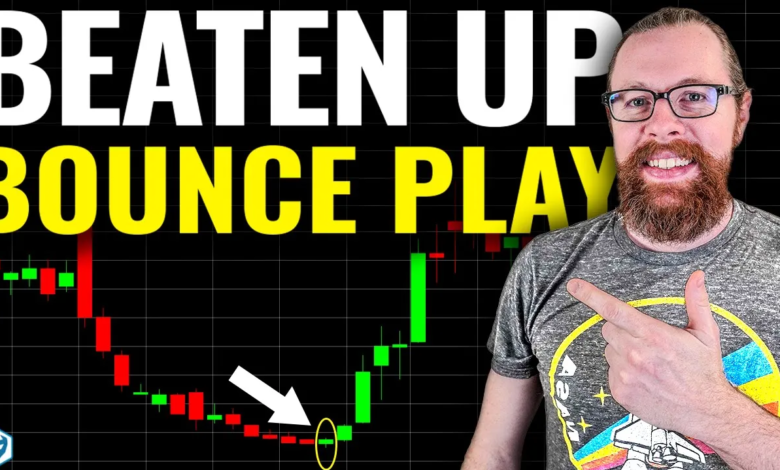Trading the Beaten Up Bounce Play

Hey everyone, it’s Ross Cameron here, and in today’s blog post, I want to delve into a recent day trading experience that perfectly exemplifies the beaten-up bounce play strategy that I discussed in my previous lesson. Today, I’ll walk you through the setup, my trading decisions, and the insights I gained from this particular trade on $PCSA.
Identifying the Perfect Setup
When it comes to the beaten-up bounce play, the key lies in identifying stocks that have experienced a prolonged downtrend and are now showing signs of a potential bounce, typically catalyzed by significant news. In the case of $PCSA, the stock soared by 150%, showcasing a textbook example of the setup I had been anticipating. The critical factor that made $PCSA stand out as a prime opportunity was the recent reverse split it had undergone. This reverse split, coupled with the beaten-up chart pattern, signaled a potential for substantial upward movement.
The reverse split indicator is a significant signal for me to anticipate a potential big bounce. In the case of $PCSA, the reverse split resulted in a surge from a low of $3 per share to nearly $14, making it an ideal candidate for the beaten-up bounce play strategy.
Criteria for Identifying Tradable Setups
To ensure that I target only the most promising setups, I adhere to specific criteria when evaluating potential trades. For instance, I look for stocks that are priced under $10, with a preference for those starting below $5 per share. This lower pricing is vital because it creates the potential for significant percentage gains, making the stock a leading gainer in the market.
In addition to price considerations, I also focus on the stock’s float and volume. For beaten-up bounce plays, I favor stocks with a float of under 5 million shares, as this can create a significant supply-demand imbalance. Moreover, I look for a high relative volume, typically seeking a volume that is at least five times higher than the average to ensure substantial market interest and trading potential.
Executing the Trade
Upon identifying $PCSA as a strong candidate for the beaten-up bounce play, I closely monitored its movements and executed a series of trades based on the evolving chart patterns and price action. The initial trade presented some challenges, with a retracement exceeding my preferred threshold. However, I adjusted my approach, leading to successful subsequent trades that capitalized on the bounce opportunities within the stock.
As the trading day unfolded, I faced dynamic price movements and encountered significant sellers influencing the stock’s behavior. This presented a unique challenge, prompting me to evaluate the origins of these substantial sell orders and their potential impact on the stock’s trajectory.
The Dynamics of Reverse Splits and Stock Behavior
Understanding the broader implications of reverse splits and their impact on stock behavior is essential for traders, especially when considering the cyclical nature of these events. By grasping the post-reverse split dynamics, including potential secondary offerings and stock dilution, traders can better anticipate and navigate the resulting price movements.
Reverse splits play a pivotal role in reshaping a stock’s trajectory, enabling it to regain compliance with listing requirements while altering its float characteristics. However, this recalibration often sets the stage for subsequent actions by the company, such as secondary offerings, which can influence the stock’s price dynamics and create opportunities or challenges for traders.
Final Thoughts
I hope this deep dive into the $PCSA trade has provided you with actionable insights and a comprehensive understanding of the intricate dynamics at play in the world of beaten up bounce plays and reverse splits. As always, remember that trading involves inherent risks, and it’s crucial to approach it with a disciplined and informed mindset. Stay tuned for more trading insights and practical lessons in the upcoming blog posts!
$PCSA +175% on the Reverse Split Setup
Stay Social
Warrior Trading was founded by Ross Cameron in 2012, and is now a thriving community of thousands of traders. You can learn more about joining the Warrior Trading community here.
Check out Ross’s newest book, How To Day Trade: The Plain Truth.
You can also hear Ross in audio form through his Apple Podcasts.
Stay connected with us on our social media pages below: